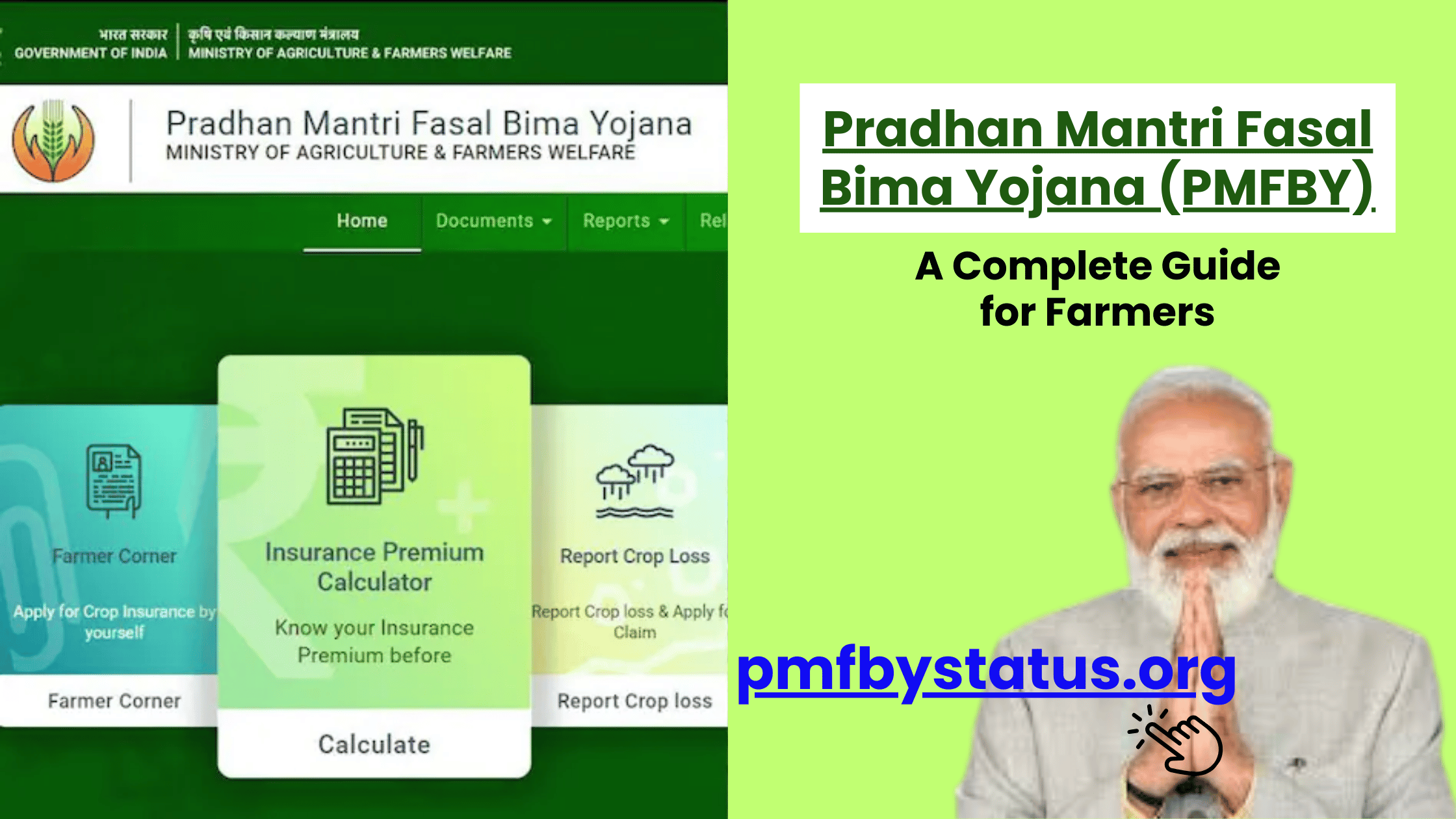To support farmers in such difficult times, the Government of India launched the Pradhan Mantri Fasal Bima Yojana (PMFBY) in 2016. Farming in India is not just an occupation; it is a way of life for millions of families. But farming also comes with many risks like drought, flood, pest attack, or sudden crop failure.
PMFBY is a crop insurance scheme that helps farmers get financial protection in case their crops are damaged due to natural calamities or unforeseen events. The aim is simple – no farmer should suffer a complete loss of income just because nature was harsh.
What is PMFBY?
The Pradhan Mantri Fasal Bima Yojana (PMFBY) is a government-sponsored crop insurance scheme. It provides insurance coverage and financial support to farmers when they face crop loss due to natural risks.
It works just like any other insurance – farmers pay a small premium, and in return, they get coverage for their crops. The government and insurance companies share the rest of the premium.
Objectives of PMFBY
- To provide financial support to farmers in case of crop failure.
- To ensure stability in farmers’ income.
- To encourage farmers to adopt modern agricultural practices and technology.
- To reduce the burden of debts and suicides among farmers.
Premium Rates for Farmers
One of the best parts of PMFBY is that the farmer’s share of the premium is very low. The remaining cost is paid by the government.
- Kharif crops: Farmers pay 2% of the sum insured.
- Rabi crops: Farmers pay 1.5% of the sum insured.
- Commercial and horticultural crops: Farmers pay 5% of the sum insured.
For example, if the insurance amount is ₹40,000 for your crop and you are growing Kharif crops, you just need to pay 2% = ₹800. The rest of the premium is paid by the government.
Who Can Apply for PMFBY?
- All farmers growing notified crops in notified areas can apply.
- Both loanee farmers (those who have taken a crop loan) and non-loanee farmers are eligible.
- The farmer should have insurable interest on the crop (own the land or have taken it on lease/share cropping).
Crops Covered Under PMFBY
PMFBY covers almost all major crops, including:
- Food crops: Cereals, pulses, millets
- Oilseeds: Soybean, mustard, sunflower etc.
- Commercial crops: Cotton, sugarcane
- Horticultural crops: Fruits and vegetables (notified by state governments)
Risks Covered Under PMFBY
Farmers are protected against:
- Prevented sowing – If sowing cannot be done due to bad weather.
- Standing crop loss – Damage during the growing season due to drought, flood, pests, diseases, etc.
- Loss during harvest – Damage to harvested crop due to cyclones, hailstorms, etc.
- Localized risks – Specific damage in one part of a field due to events like landslide or waterlogging.
How to Apply for PMFBY?
Applying is simple. Farmers can register through:
- Official website: pmfby.gov.in
- Mobile app: Crop Insurance App
- Common Service Centres (CSCs) near villages
- Banks from where the farmer has taken a crop loan
Documents Required
- Aadhaar card
- Land ownership papers / lease papers
- Crop details (sowing, type of crop)
- Bank account details (for claim settlement)
Benefits of PMFBY
- Low premium, high coverage.
- Covers wide range of risks – from sowing to post-harvest.
- Direct benefit transfer (DBT) – claim money is sent directly to farmer’s bank account.
- Encourages modern farming by giving financial security.
- Reduces farmer stress and dependency on moneylenders.
Challenges in PMFBY
Though PMFBY is a big step towards farmer welfare, it also faces challenges:
- Delay in claim settlement in some states.
- Low awareness among small farmers.
- Issues in crop loss assessment due to manual surveys.
The government is trying to solve these issues by using technology like drones, satellites, and mobile apps for faster and accurate crop damage assessment.
Impact of PMFBY
Since its launch in 2016, PMFBY has helped crores of farmers across India. According to government reports, more than 29 crore farmer applications have been enrolled, and claims worth over ₹1.15 lakh crore have been paid to farmers.
This shows that PMFBY is becoming a strong safety net for farmers against the uncertainties of farming.
Conclusion
The Pradhan Mantri Fasal Bima Yojana (PMFBY) is more than just an insurance scheme – it is a support system for Indian farmers. By offering financial security against crop failure, it not only reduces risks but also gives farmers the confidence to invest in better seeds, fertilizers, and techniques.
For any farmer, joining PMFBY is a wise step to secure their hard work and protect their income.
